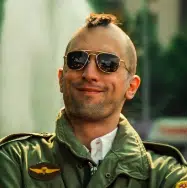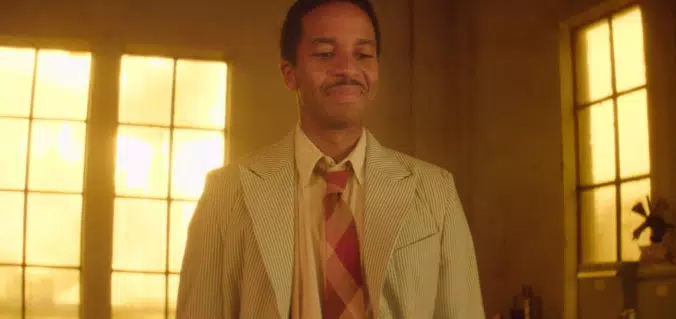
POV: You’re watching a movie.
Starring is the actor who’s delighted you with some of his most ridiculous, meme-worthy moments over the past five years. A man born in the very heart of Hollywood. In this film you’re watching, there’s a rather close-up shot of his face, where the camera zooms in (yes, the famous camera move Kubrick immortalized with his “Kubrick stare”), possibly including his shoulders and a bit of space above his hair, closing in on the actor’s eyes.
In this moment of subtle stillness yet constant descent into madness, you realize it’s not just about how this spiritual freefall is being portrayed—but about who is capturing it: none other than Nicolas Cage. Lord and master of unleashed madness, of unbridled fear, icon of exaggeration—or perhaps more fittingly… OF THE UN-CAGE-D RAGE. But… is it unbearably heavy to carry that kind of rage, if it always seems to be “freed” from oneself? I believe that to understand the actor, you need to understand what he represents. And Cage—the nephew of Francis Ford Coppola—is not just another one in the crowd.
Because Cage is not one of those actors who plays a character. Cage is the movie reinterpreting him.
This has been the case since Mandy, I’d dare say. Probably even since Raising Arizona, but who really knows? I can’t fragment my truth. I want to sell it to you as something absolute. Since that cosmic, psychedelic film by Panos Cosmatos, the idea began to emerge that maybe Cage has always been a misunderstood god of acting. Maybe not the most stable, or the best structured, or that methodical performer everyone expects. But he DEFINITELY has something. Aura. Presence. “Something in his eyes,” as Blade Runner’s Detective Gaff would say. An unstoppable urge to unchain the rage—something that, ironically, ends up burdening him time and again. Cage must present himself as such a bearer because his name is the best representation of what he is.

And the weird cinema of Irish director Lorcan Finnegan, a modernized take on Buñuel’s most claustrophobic surrealism where the fantastic merges with the nightmarish and/or dreamlike, becomes the ideal stage to showcase Cage at his most histrionic. In The Surfer, a film I believe will become a cult classic in four or five years, his character has no name. He doesn’t need one. He is, simply, “The Surfer”—a family man seemingly trying to reconnect with his son through a promise: to buy a huge house at the end of Cliff Top Drive, a street in an idyllic coastal neighborhood.
From that forcefully warm moment between father and son, I felt a connection. When I was very young, my father promised he’d take me to a picturesque mountain town when I turned twelve. Twenty-one years have passed… and I still haven’t been there.
But that’s not the point.

The most poetic filmmaker of all, Andrei Tarkovsky, said it best in his 1987 book Sculpting in Time:
“A man who has lost his memories, who has lost his memory, is trapped in an illusory existence. He falls outside of time and thus loses the ability to remain connected to the visible world. Which means he is condemned to madness.”

And Finnegan uses the flashback as if it were part of a hallucination. One that was already embedded in the surfer’s subconscious before we even meet him: Cage is already unleashed before we can even grasp it or recognize it. This might not work for many people—but in my view, it does. Why do I believe it works and not assert it? I’ll explain below.
The Vivarium director repeats many strange yet familiar behavioral patterns in his characters, encapsulating the madness of living in a space they can neither—nor wish to—escape. He repeats rituals, summoning those willing to be part of the so-called “localism” that rules these shores. Shores where Cage is caught between the tragedy of the past and the agony of the present, creating an uncertain future for both his character and us, the viewers.

He also returns to the minimalist configuration of space as a metaphor for the complex human brain. How can one feel trapped in places as vast as these? In this case, a beautiful Australian beach. Hundreds and hundreds of meters at your disposal—just like the endless housing units in Vivarium. What could’ve been an easy “okay, I’ll walk 300 meters away with my kid and you’ll never see us again” response to the Bay Boys’ rejection instead becomes a growing feverish obsession with belonging. With healing. Or simply… reconnecting.
“Don’t Live Here, Don’t Surf Here,” a local exclaims as Cage peacefully arrives with his son.
WTF? Do these kinds of surf gangs actually exist? I asked myself.
In this space defined by the character’s own mental boundaries—paradoxical, isn’t it?—Cage holds back his urge to eat, crawls through filth, then eats yolks cracked from bird nests, gives away valuable objects in ridiculous trades, drinks spoiled water, and becomes part of an enormous psychedelic delirium—even though the delirium already had him from the start. His performance is precise yet deliberately chaotic, showing rage disguised as calm, peaking at the height of his psychic and physical transformation. There’s no escape—because there’s a story that didn’t end the way he wanted.

In psychology, there’s a term called psychogenic fugue (also known as dissociative fugue), used to describe someone wandering in a state of reversible amnesia. While The Surfer could have been that Buñuel-esque film that promises a Lost Highway-style ending (an identity-bending twist that reveals the person he never was), the resolution loses some power. It counteracts the emotional and psychological descent of the protagonist, his partial loss of identity, and the nightmarish torment caused by the locals—with the tender story of a father and son who just wanted to surf.
Still—this is no generic or risk-averse film.
As the fantastic MarvelousMars says in 👉 this fantastic article, the best thing it can do—if it doesn’t blow your mind—is inspire you to one day tell your own version.
Published on JULY 15, 2025, 23:41 PM | UTC-GMT -3
If you liked this piece of writing expression remember to give it a 👉 LIKE, put it in your FAVORITES, COMMENT 🗣️ , and FOLLOW ME for more articles like this📽



























































Anyways, I've seen a bunch of Nic Cage movies and this hasn't been one of them. After your reading of it, though, it's definitely going up on my list!
View replies 1
View replies 1